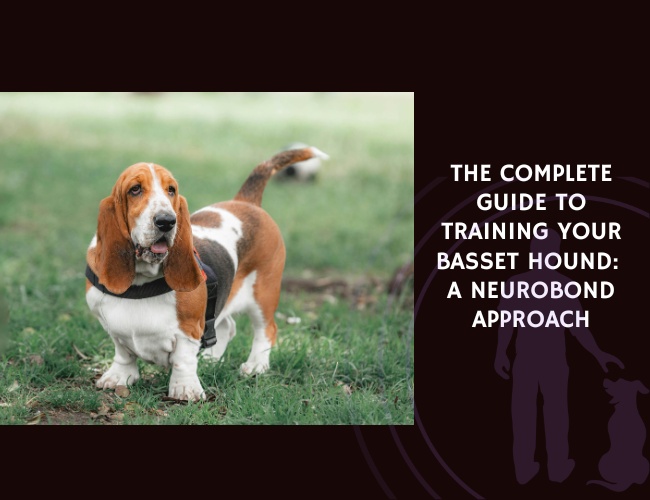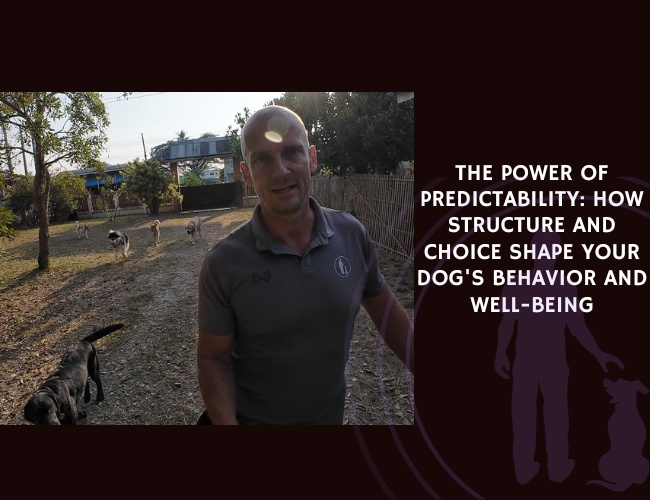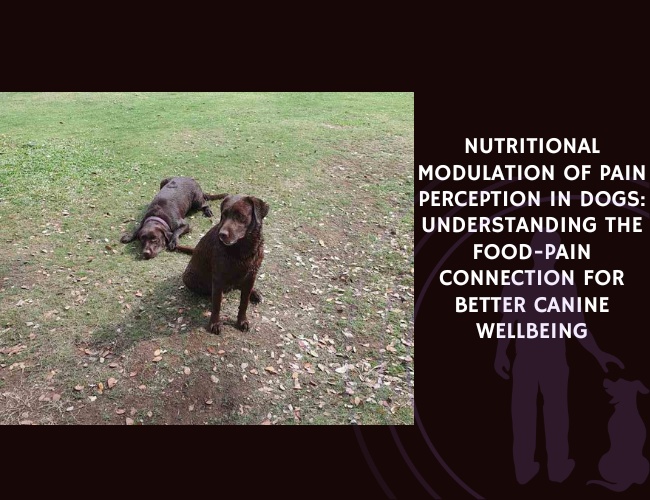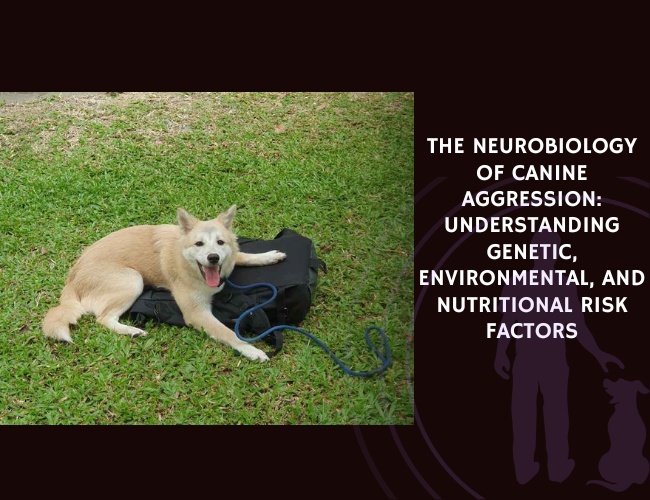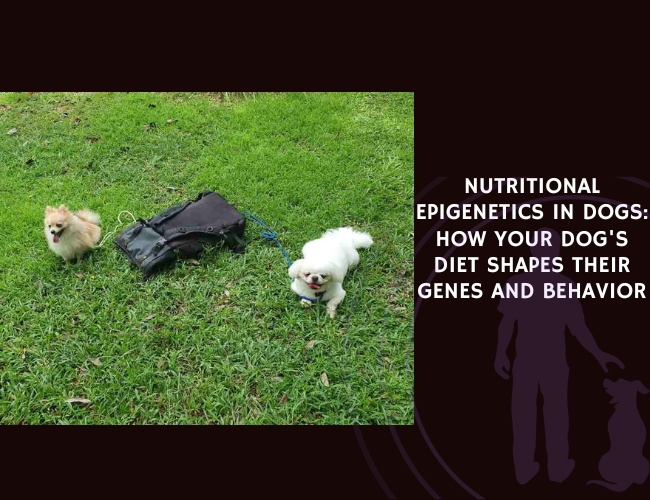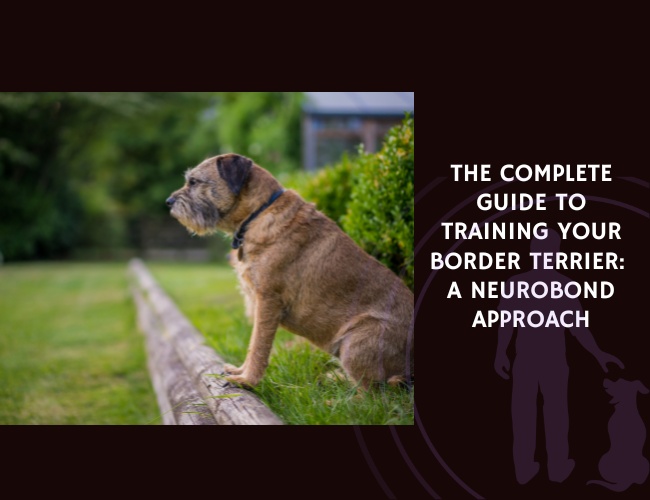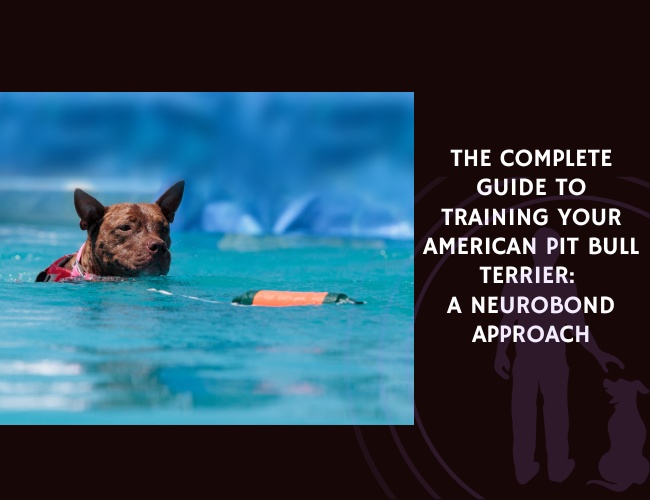Introduction: Understanding Your Scent-Driven Companion
Your Basset Hound arrives in your life carrying centuries of hunting heritage in those short, sturdy legs. These remarkable dogs, bred to track game through dense underbrush with unwavering determination, bring both their independent spirit and deeply social nature into your home. Let us guide you through understanding how their unique neurological wiring — from their powerful olfactory system to their stress-sensitive temperament — shapes the way they learn, connect, and thrive.
The NeuroBond approach recognizes that your Basset isn’t stubborn; they’re an independent thinker navigating a world of ten thousand scents. When we honor their instinctive intelligence rather than fighting it, training transforms from a battle of wills into a dance of mutual understanding. Your journey together begins not with commands, but with connection.
Character & Behavior: The Basset Operating System
The Independent Problem-Solver
Your Basset Hound processes the world through an ancient hunting algorithm — one that values autonomous decision-making over blind obedience. This isn’t defiance; it’s the very trait that made them invaluable tracking companions for centuries. When your Basset pauses mid-walk to analyze a scent trail, they’re not ignoring you — they’re running complex calculations that would put a forensic scientist to shame.
In the NeuroBond framework, we recognize this independence as feedback about your relationship dynamic. A Basset who constantly chooses environmental stimuli over you isn’t being difficult; they’re telling you the connection needs strengthening. Their brain literally prioritizes scent information over auditory commands when not properly bonded.
The Stress Response System
Here’s what many trainers miss: Basset Hounds have a unique stress response that manifests as complete shutdown. When overwhelmed, their amygdala essentially hits the emergency brake, making them appear stubborn or slow. This neurological trait means punishment-based methods don’t just fail — they actively damage your dog’s learning capacity.
Your Basset’s stress sensitivity is actually a gift in disguise. It becomes your early warning system, telling you exactly when training has shifted from productive to overwhelming. That “stubborn” moment? It’s your dog saying, “I need a different approach.”
The Food-Motivated Mind
Evolution gifted your Basset with an extraordinarily strong food drive — a survival mechanism for dogs who might track prey for hours. This isn’t greed; it’s hardwired motivation that, when channeled correctly, becomes your most powerful training tool. The NeuroBond method transforms this drive from a potential problem (begging, counter-surfing) into your primary communication channel.
Vocalization & Communication: Decoding the Basset Language
Understanding the Bay
That deep, melodious howl isn’t just noise — it’s sophisticated communication developed over centuries. Your Basset’s baying carries emotional and informational content that varies with context. A trail bay differs from a loneliness bay, which differs from an alert bay. Learning to read these variations helps you understand what your dog needs before problems escalate.
In NeuroBond training, we don’t suppress natural vocalizations. Instead, we create contexts where silence is more rewarding than sound. Your Basset learns that checking in with you brings better outcomes than announcing every squirrel in the neighborhood.
Body Language Beneath the Droopy Exterior
Those soulful eyes and hanging ears might mask subtle communications, but your Basset speaks volumes through their body. A slightly lifted ear despite its weight indicates interest. A slow, deliberate tail wag paired with lowered shoulders signals uncertainty rather than happiness. These micro-expressions become your roadmap to understanding their emotional state during training.
Watch for the “Basset lean” — when they shift their considerable weight against you. This isn’t laziness; it’s trust manifesting physically. In NeuroBond terms, this lean represents the invisible leash forming between you. 🐾
Training & Education: The NeuroBond Method in Action
Building the Foundation: Connection Before Commands
Forget “sit” and “stay” for now. Your first month with a Basset should focus entirely on creating what we call the NeuroBond — that invisible thread of trust and mutual understanding. This means:
- Eye contact games: Reward every voluntary glance your way, no matter how brief
- Proximity rewards: Treats rain from heaven whenever they choose to be near you
- Scent association: Wear a shirt for a day, then leave it in their bed — you become part of their olfactory landscape
Your Basset’s brain needs to rewire you from “that creature who lives here” to “my secure base.” This takes time — remember, they may need 80 repetitions where other breeds need 20. This isn’t slow learning; it’s thorough processing.
The Standing Leash Technique
Here’s where Basset-specific NeuroBond magic happens. When your dog pulls, don’t yank back. Simply stand on the leash with enough slack that they can sit or lie down but can’t wander. Now wait. Your Basset’s problem-solving brain will cycle through options: pulling harder (doesn’t work), vocalizing (you stay neutral), and eventually… settling.
The moment they choose to settle — that’s when you celebrate. You’ve just let them discover the solution themselves, which means it sticks in their memory far better than any forced compliance. This technique particularly suits the Basset’s need for autonomous decision-making while establishing you as the calm, reliable center of their world.
Scent Work as Learning Gateway
Your Basset’s nose isn’t a distraction — it’s your teaching tool. Structured scent work engages their highest cognitive functions while building impulse control. Hide treats in progressively challenging locations, but here’s the NeuroBond twist: they must check in with you before searching. This builds the pattern of “human first, then reward.”
Start simple:
- Three boxes, one treat, they must make eye contact before you release them to search
- Graduate to multiple rooms, but maintain the check-in requirement
- Eventually, finding the scent means returning to you for the reward, not self-rewarding at the source
This transforms their greatest “weakness” (scent distraction) into their greatest strength (scent-based connection with you).
Performance & Activities: Channeling the Working Heritage
From Couch Potato to Purposeful Partner
Yes, your Basset loves lounging, but their brain craves purpose. Without meaningful activities, that hunting drive turns inward, manifesting as destructive behaviors or excessive vocalization. The NeuroBond approach channels their working heritage into modern activities that satisfy their instincts while deepening your connection.
Tracking games aren’t just fun — they’re neurologically necessary. When your Basset follows a scent trail you’ve laid, their brain releases a cocktail of satisfaction chemicals that no amount of basic obedience can match. Start with drag trails using a favorite toy, gradually increasing distance and adding turns. The magic moment comes when they choose to share their discovery with you rather than keeping it to themselves.
The Slow Hunt: Reframing Exercise Needs
Your Basset wasn’t built for marathons but for methodical persistence. Traditional “exercise” often frustrates them. Instead, create what we call “slow hunts” — leisurely walks where you follow their nose occasionally, letting them teach you about the invisible scent landscape. This isn’t giving in; it’s strategic relationship building.
During these hunts, practice the “check-in and continue” pattern. They get to investigate that fascinating smell, but only after acknowledging you first. Over time, this becomes automatic — the invisible leash strengthening with every successful exchange.

Nutritional Recommendations: Food as Communication Tool
Strategic Feeding for Training Success
Your Basset’s powerful food drive isn’t just about filling their belly — it’s about survival circuitry that makes them exceptionally responsive to food-based communication. In the NeuroBond framework, we don’t just feed; we create meaningful exchanges that reinforce connection.
Never free-feed a Basset. Every meal becomes a training opportunity, not through making them “work” for food, but through creating positive associations with your presence. Hand-feed the first few bites of each meal during initial bonding. This ancient act triggers deep mammalian bonding circuits — you become the source of survival itself.
The Treat Hierarchy System
Create three treat levels:
- Level 1: Daily kibble (for basic check-ins)
- Level 2: Special training treats (for new behaviors)
- Level 3: High-value jackpots (for breakthrough moments)
Your Basset’s brain quickly learns this hierarchy, and you can communicate the importance of a behavior through your treat choice. That first successful recall past a rabbit? That’s a Level 3 moment that burns into their memory.
Managing the Food-Obsessed Mind
Begging, counter-surfing, and food theft aren’t moral failings — they’re your Basset solving problems with the tools evolution gave them. The NeuroBond approach redirects this drive. Create “legal” foraging opportunities: puzzle feeders, hidden kibble treasures, and supervised “hunting” games where finding food means bringing it to you first.
When they do steal food, remember: punishment after the fact is meaningless to a dog living in the present moment. Instead, that stolen sandwich becomes information about where your training gaps exist. More connection work needed, not more correction.
Scent. Soul. Strategy.
Your Basset isn’t stubborn—he’s decoding the world.
Every pause, sniff, and detour is a deliberate calculation, not defiance. Training begins when you stop trying to override instinct and start building trust that competes with ten thousand scents. Connection is the only command that sticks.
Stress doesn’t shout—it shuts down.
When your Basset freezes, flops, or “refuses,” their brain isn’t resisting—it’s overwhelmed. Their silence is a message, not misbehaviour. NeuroBond training listens to what others label as disobedience, creating space for safety and learning to return.
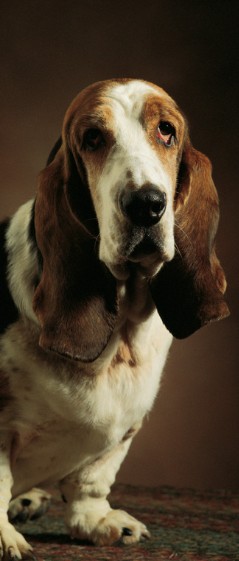

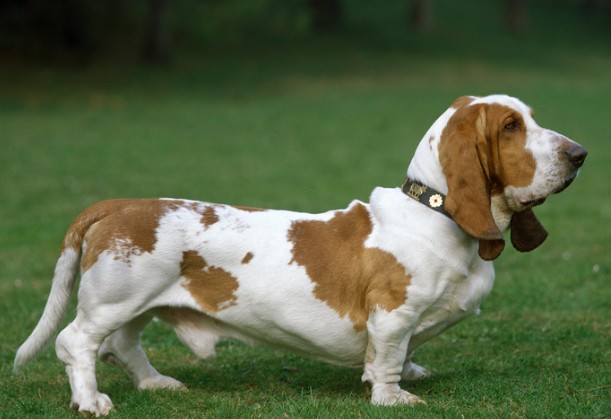
The nose leads, but love holds the leash.
That legendary scent drive isn’t your enemy—it’s your access point. When you guide their nose through shared games, not shouted commands, your Basset doesn’t just follow the trail… they start choosing you as their destination.
Health Concerns: Stress, Structure, and Well-being
The Stress-Shutdown Cycle
Your Basset’s tendency to shut down under stress isn’t just behavioral — it’s neurological. Chronic stress literally shrinks the hippocampus, damaging their ability to form new memories and learn. This is why harsh training methods don’t just fail with Bassets; they create lasting damage.
Signs of stress shutdown include:
- Sudden “deafness” to known commands
- Freezing in place during walks
- Excessive sleeping or lethargy
- Refusal to take even high-value treats
When you see these signs, training stops immediately. Your Basset is telling you their neurological cup is full. The NeuroBond approach treats these moments as valuable feedback, not frustration.
Separation Anxiety: The Shadow Side of Bonding
Bassets form deep attachments, and separation anxiety is common. But here’s what’s crucial: this isn’t weakness; it’s the flip side of their capacity for profound connection. The NeuroBond method builds independence through security, not forced separation.
Start with micro-departures — step outside for five seconds, return before anxiety peaks. Your Basset learns that departures predict returns. Gradually extend duration, but here’s the key: vary the intervals randomly. Predictability breeds anxiety; randomness builds confidence.
Leave worn clothing with your scent when you go. For a scent-driven breed, this provides an olfactory security blanket that soothes the ancient parts of their brain. Combined with food puzzles that engage their problem-solving circuits, you create a positive alone-time experience. 🧡
Lifestyle & Environment: Creating the Basset Haven
Designing for the Low Rider
Your Basset’s unique physiology — those short legs and long spine — means your environment needs thoughtful adaptation. Stairs become training opportunities for careful, controlled movement. That jump onto the couch? Replace it with a ramp that becomes another check-in moment with you.
The NeuroBond home has “settlement stations” — specific spots with comfortable bedding where your Basset learns to default when uncertain. These aren’t isolation spots but connection points where good things happen. Treats appear mysteriously when they choose these spots independently.
The Scent-Enriched Environment
Your home is a sensory desert compared to the outdoor world your Basset’s ancestors navigated. Enrichment isn’t luxury; it’s necessity. Rotate scent items weekly: a pinecone from the park, a friend’s borrowed toy, herbs from the garden. These novel scents provide mental stimulation that tired legs cannot.
Create “scent gardens” in boxes or designated areas where new smells appear regularly. Your Basset learns that home is interesting too, reducing the desperate need to investigate every molecule on walks. This environmental management supports your training by meeting their needs proactively.
Managing Multi-Dog Dynamics
Bassets generally love canine company, but their independent streak can create unexpected dynamics. In multi-dog households, the NeuroBond approach means building individual connections before expecting group harmony. Each dog needs separate training time where they’re the sole focus of connection-building.
Resource guarding around food is common given their food drive. Prevention beats correction: feed dogs in separate spaces initially, gradually decreasing distance as they learn that your presence predicts abundance, not competition. The goal isn’t just peaceful coexistence but genuine security.
Senior Care: Adapting the Bond Through Life Stages
The Cognitive Shift
As your Basset ages, their stubborn streak might intensify — or it might be cognitive decline masquerading as defiance. Senior Bassets often experience “sundowning,” becoming confused in familiar spaces during evening hours. The NeuroBond approach views this not as deterioration but as evolution of needs.
Maintain connection through adjusted expectations. That recall that takes 30 seconds instead of 5? Still a success. The training continues but shifts focus from new skills to maintaining existing neural pathways. Every successful interaction, no matter how simple, strengthens cognitive function.
Sensory Changes and Adaptation
Those extraordinary noses remain sharp even as hearing and vision fade. Adapt your communication to rely more heavily on scent cues. A dab of vanilla extract means “dinner time.” Lavender on their bed signals “rest time.” You’re speaking their primary language even more fluently.
Physical touch becomes increasingly important. That Basset lean takes on new meaning — it’s not just trust but also navigation aid. Your steady presence becomes their anchor in a increasingly confusing sensory world. The invisible leash becomes a lifeline.
Comfort Over Performance
The senior years are when your NeuroBond investment pays dividends. All those repetitions, all that patience, created neural pathways that persist even as cognition changes. Your presence alone regulates their nervous system. You’ve become their living anxiety medication, their compass, their home.
Training continues but transforms into comfort rituals. The “sit” before meals becomes a grounding moment. The check-in on walks becomes a cognitive anchor. You’re not asking for performance; you’re providing structure that supports their aging brain. 🐾
Common Challenges: Troubleshooting with NeuroBond Principles
The Selective Hearing Phenomenon
“My Basset only listens when they want to” — sound familiar? This isn’t selective hearing; it’s priority processing. Your Basset’s brain literally assigns value to stimuli, and you’re competing with millions of years of evolution that says “follow the scent.”
The NeuroBond solution: Become more valuable than the distraction, not louder than it. When your Basset “ignores” you for a smell, wait. Don’t repeat commands. When they eventually check in (and they will, if you’ve built the bond), that’s when the magic happens — immediate, enthusiastic reward. You’re teaching them that you’re the gateway to everything good, including returning to that fascinating scent.
The Housebreaking Marathon
Bassets are notoriously slow to housebreak, sometimes taking 6-8 months. This isn’t stupidity; it’s the combination of independent thinking and a lower urgency about human preferences. They’re not motivated by disappointing you the way a people-pleasing breed might be.
Structure beats correction every time:
- Scheduled feeding creates predictable elimination
- Scent marking outside with treats creates positive associations
- Accidents are cleaned with enzyme cleaners to prevent scent-triggered repeats
- Success is celebrated like they’ve discovered a new continent
Remember: every accident is feedback about your management, not their morality. Adjust the system, not the dog.
The Food Thief Chronicles
Your Basset’s food theft isn’t criminal; it’s creative problem-solving. In their mind, unguarded food is an environmental resource, not property. The NeuroBond approach doesn’t create food police; it creates food partners.
Teach “trade” games where bringing you contraband results in better rewards. That stolen sock becomes currency for cheese. Over time, your Basset learns that bringing you things predicts upgrades. The invisible leash extends to include resource sharing rather than resource guarding.
Conclusion: Is the Basset Hound Right for You?
The Investment and the Return
Living with a Basset Hound means accepting that you’re not getting an obedient servant — you’re entering a partnership with an independent contractor. The NeuroBond approach works because it honors this reality. Your Basset will never be a precision obedience champion, but they’ll become something far more valuable: a deeply connected companion who chooses you, over and over again.
The training journey requires patience that borders on saintly. Those 80 repetitions aren’t just a number; they’re 80 opportunities to strengthen your connection. Every slow recall, every eventually-successful housebreaking moment, every time they choose you over a scent trail — these are victories that build into something profound.
Questions for Prospective Basset Parents
Before bringing home a Basset, honestly assess:
- Can you find joy in slow progress and small victories?
- Will you celebrate independent thinking rather than trying to suppress it?
- Do you have the patience for a dog who processes on their own timeline?
- Can you provide mental stimulation through scent work and puzzles?
- Will you commit to connection-based training even when traditional methods seem faster?
- Are you prepared for a dog whose love language is food and whose communication is howling?
The Lifetime Bond
When you commit to the NeuroBond approach with your Basset, you’re not just training a dog — you’re entering into an ancient partnership. Your Basset’s ancestors tracked game through medieval forests, and that legacy lives in your living room companion. Honor it, work with it, and you’ll discover that beneath that stubborn exterior lies a profound capacity for connection.
The invisible leash you build with your Basset becomes stronger than any physical restraint. It’s woven from thousands of patient repetitions, countless treat exchanges, and the gradual recognition that you’re not trying to control them — you’re inviting them into partnership. This is the NeuroBond promise: not perfect obedience, but perfect understanding.
Your Basset will teach you patience you didn’t know you had. They’ll show you a world of scent you never knew existed. Most importantly, they’ll demonstrate that true training isn’t about compliance — it’s about connection. And once that connection is established, you’ll have something far more valuable than an obedient dog. You’ll have a partner who chooses you, not because they must, but because you’ve become their favorite adventure.
Welcome to the wonderful, challenging, deeply rewarding world of Basset Hound companionship. The journey requires patience, creativity, and a willingness to see the world through those soulful eyes. But for those who embrace the NeuroBond approach, the destination is worth every slowly-learned step along the way. 🧡
Next Steps and Resources
Ready to begin your NeuroBond journey? Start with connection, not commands. Watch for those moments when your Basset chooses you over distraction — those are your building blocks. Remember: every behavior is feedback about your relationship. Listen to what your dog is telling you, and let them show you the way forward.
The path ahead won’t always be straight, and it certainly won’t be fast. But it will be real, it will be profound, and it will transform both you and your Basset in ways that quick-fix training never could. Trust the process, trust your dog, and most importantly, trust the bond you’re building together.

